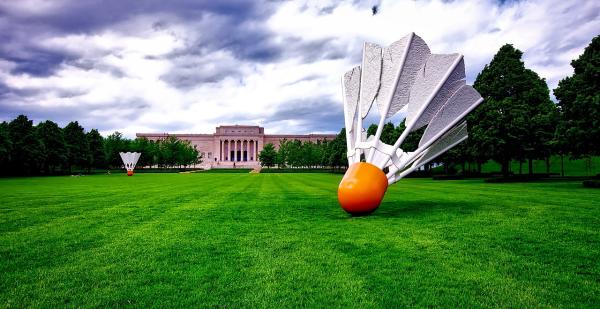The purpose: to research highly contagious diseases affecting animals and humans, such as foot and mouth disease. The NBAF will also feature a Biologics Development Module (BDM) to develop pilot vaccines and other countermeasures and accelerate technology transfer to industry.
The location of this lab? Manhattan. Don’t be alarmed; it’s only Manhattan, Kansas, albeit adjacent to Kansas State University.
According to the U.S. Department of Agriculture (USDA), which will retain jurisdiction as owner/operator, “NBAF is necessary to meet the requirements of Homeland Security Presidential Directive 9 (HSPD-9).” But not to worry. “The USDA and the Centers for Disease Control will not issue a certificate of registration allowing select agent research at NBAF until all requirements are satisfied.”
Perhaps such a facility is necessary. That is not the question for this piece. The question is, why here, adjacent to a University housing almost 25,000 students plus a few thousand faculty and staff?
The official reason given by the USDA is that the facility is within the “Kansas City Animal Health Corridor, the largest concentration of animal health companies in the world.” To me, that is a grave detriment, not a plus. Should there be a lab leak, the likely reservoir of those at risk of disease — both susceptible to illness and to foster transmission and spread — is within too close proximity. Interestingly, the prior locus of animal experimentation (although not even a Biosafety Level 4) was Plum Island, an isolated plot off the coast of Long Island, not contiguous with the US mainland.
Even the USDA recognized the danger of a foot and mouth disease outbreak occurring in the Midwest, although couching their concern as a basis for the Center — with the blithe assumption that the vaccines sure to emerge would protect the respective populace:
If an FMD outbreak were to occur in the Midwest and no emergency vaccination program was implemented, the research found estimated losses to producers and consumers at approximately $188 billion U.S. dollars (USD) and additional government losses at $11 billion USD due to controlling livestock movement and depopulating infected livestock.
Perhaps the safety record of the adjacent University might have been a draw, along with a repository of expertise and experience, the home of a veterinary college (and an animal cloning center). Alas, not:
Regulators cited Kansas State University in 2015 for repeatedly violating safety regulations at its existing biosafety level 3 research lab, the Biosecurity Research Institute . . . The violations . . . included failing to maintain written safety plans, ensure biosafety and containment of pathogens, provide and document training, and implement the university’s security plan to prevent unauthorized access, theft, or loss of pathogens.
Or perhaps the site decision itself was an afterthought. After all, following 9/11, President Bush (and VP Cheney and Secretary Rumsfeld) were extremely concerned about bioterrorism, resulting in Bush’s presidential directive of 2004 (reauthorized in 2007) to improve the country’s biodefense plans and weapons. The decision to site the lab at Kansas State was only made in 2009, and that was after a long site selection competition.
Alternatively, perhaps the locus and terrain of the area provides a stable site, one impervious to atmospheric or environmental impact or free from related risks, unlike Yucca Mountain — far-off in the Nevada Desert, buried in a cavernous underground enclosure deep in the bowels of the earth, hours from anywhere, where spent nuclear waste from civilian reactors was to be stored.
That project was transparent to a fault; the facility once hosted bus tours for spectators to show off their safety features. But the venture was nixed, torpedoed by a jittery Congress fearful of the risk of an earthquake in the next 10,000 years and arguments by locals suffering NIMBYITIS. And so, “clean” nuclear power still eludes us because we have no place to store its detritus.
While Kansas isn’t earthquake-prone, the area is affected by other natural disasters that may be of consequence. (Natural disasters themselves breed novel organisms via genetic shift and drift.)
The city is located in the area called “Tornado Alley” by the National Weather Service. Between 1950 and 2010, Manhattan, Kansas, had 76 moderate tornadoes and 13 severe ones, twice the average American city. During this time, the area also experienced four blizzards and 314 floods.
- In 2022, a major storm hit the area, blowing a roof off one fraternity and causing $37 million in damage to the campus ($71 million to the City).
- In 1951, the business district was flooded with eight feet of water.
- In 2018, floods inundated parts of Kansas near the NBAF.
So, how did Manhattan, Kansas, become the site of the NBAF?
The site search was narrowed to six choices in 2008. That year, the Kansas Governor, Kathleen Sebelius, actively lobbied for her state to host the $1.25 billion facility.
By November of 2008, a new President was elected. Shortly before the new Secretary of Health and Human Services was to take office, Kansas was selected as the finalist.
The selection of the site was questioned by the Government Accountability Office. But by then, the new Secretary of HHS was firmly in control. Who was she?
Kathleen Sebelius. And a few weeks ago, Sebelius celebrated the facility’s completion.
True, these facts are, at this point, only correlations and are not necessarily causally linked. On the other hand, building a $1.25 billion facility, of which the federal government is investing over $900 million, creating jobs and other spillover economic effects, invites speculation. Does politics make for the strangest bedfellows — in this case, perhaps, with pathogens?
This article is reprinted, with permission, from Harvard's Bill of Health. The original article can be found here.




